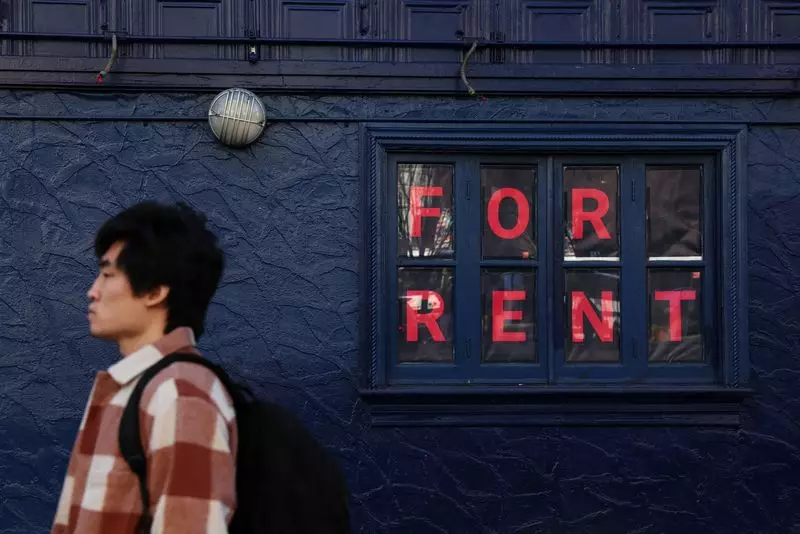In recent discussions surrounding the economy, the issue of rent inflation has garnered significant attention as it continues to exert pressure on consumers across the United States. A report released by the Federal Reserve Bank of Cleveland highlights this growing concern, predicting that rent inflation will remain elevated, significantly above pre-pandemic levels, until around mid-2026. This forecast paints a troubling picture for both policymakers and consumers alike, as it suggests that the road to stabilizing overall inflation at the targeted 2% is fraught with challenges.
The Cleveland Fed’s economists reveal that one of the critical factors driving this sustained rent inflation is the widening gap between the prices of new rental agreements and those of existing leases. Historically, this gap has usually hovered around 1%, but current estimates suggest it has ballooned to nearly 5.5%. This substantial divergence indicates that tenants whose leases are up for renewal have yet to feel the full impact of the soaring rental prices reflected in new leases. As a result, the existing tenants might experience a delayed but inevitable increase in their rental costs as contracts come up for negotiation.
The challenge posed by persistent rent inflation is not merely a matter of housing economics; it is closely intertwined with broader monetary policies aimed at reining in inflation. While Federal Reserve officials maintain a degree of optimism regarding the decline of overall inflation to 2%, the combination of rent inflation and its correlation with consumer price indices complicates these efforts. Recent efforts by the Fed, including a series of interest rate cuts, aim to reestablish a balanced monetary policy while navigating the complexities introduced by the housing market.
Prominent economists, such as Omair Sharif from Inflation Insights, have noted that despite a deceleration in rent growth—down to an annualized rate of 4.6% as of September—there remains a vigorous pace of rental cost increases. Although these metrics signal progress, they also underscore the significant lag that persists between current and historical rental costs. The expectation that the deceleration will translate into lower inflation rates down the line offers a glimmer of hope, but it does not erase the immediate pressures faced by consumers.
The role of the housing market in shaping economic conditions cannot be understated. Shelter costs are a significant component of the Consumer Price Index (CPI) and, therefore, a major factor in overall inflation rates. The observations made by officials like St. Louis Fed leader Alberto Musalem illustrate this crucial point. An increase in shelter prices, viewed as the “stickiest” element of inflation, reinforces the complexity of achieving desired inflation targets in the near future. The current state of the job market, which appears to be less frenzied, also plays a role in tempering rental price increases—a factor that could eventually lead to more stable rent costs.
Despite optimistic projections regarding the future of inflation, the persistent nature of rent inflation raises legitimate concerns about the economic wellbeing of consumers. The looming potential for sharp increases in lease renewals poses a risk of economic stagnation, discontent among renters, and broader implications for consumer spending trends.
The economic landscape remains unpredictable, particularly in the context of rent inflation and its repercussions on broader inflation targets set by the Federal Reserve. As consumers await the impact of ongoing economic policies, the interplay between new rental prices and existing leases will continue to influence both individual household finances and national economic trends.
In confronting these challenges, it is imperative for policymakers to remain vigilant and adaptable, responding to evolving housing market conditions while striving to stabilize inflation overall. With persistent rent inflation likely to remain a critical factor for years to come, the task involves carefully balancing the needs of tenants and the broader economic framework to foster stability and growth. The roadmap may be convoluted, but deliberate and informed measures can steer the economy toward a more balanced and prosperous future.

